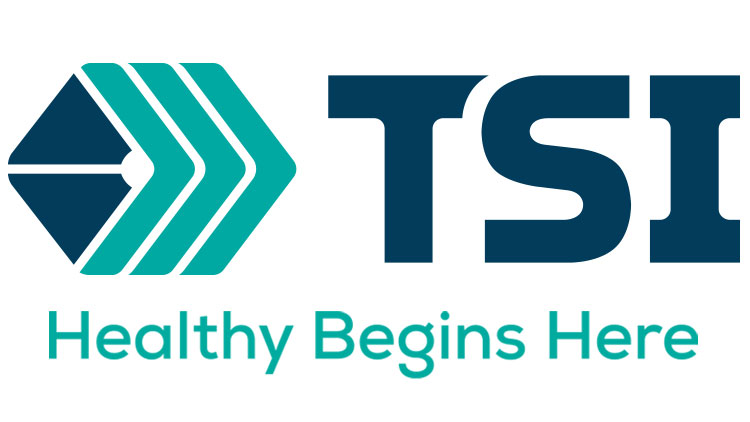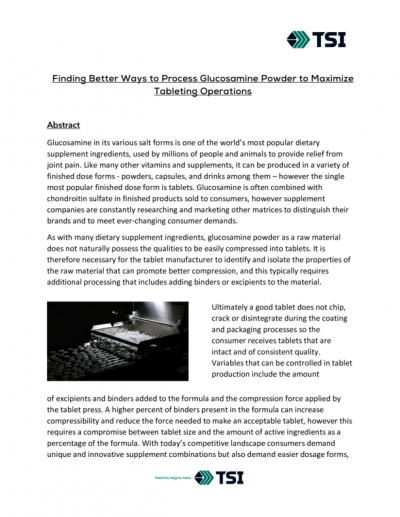Promotional Features
How GlucosaGreen Can Sustain Your Joint Health Brand
Plant-based glucosamine suits the growing consumer demand for sustainable products and desire for ethical consumption.
Sustainability is more than just a buzzword – it is a promise and a protocol to ensure resource renewability for future generations.
Ethical consumption is becoming foundational across the globe. A market research report from Edelman found that in 2017, 57% of consumers surveyed are more likely to either boycott or buy a brand based on its stance on social issues. One key social issue is sustainability and ecologically responsible production and packaging.
A Nielsen study [“Sustainability Sells: Linking Sustainability Claims to Sales” 10-16, 2018] revealed that 81% of consumers polled globally believe that brands should use sustainable practices. Further, 38% of them stated they would pay more for products that are sustainably produced, and generationally, 72% of Millennials will pay more to support sustainable brands.
In the realm of dietary supplements, regenerative agriculture is a cornerstone of a sustainable industry. According to “The Future of Sustainability 2018” by The Futures Centre, agricultural emissions represented up to 15% of the total global amount. Conventional farming practices are known to degrade soils, as well as to impair both water quality and biodiversity.
The report described regenerative agriculture as a practice that “takes advantage of soil as a carbon sink, improves soil quality, produces more nutritious food, and improves the well-being of those who produce it. It is underpinned by principles and techniques such as intercropping (cultivating two or more crops together), carbon sequestration in the soil (aka ‘carbon farming’), keeping living plant cover on soils, and using insect predators instead of chemical pesticide.”
This is just one aspect of ethical practices that characterize sustainability. Another is trading one resource that is more limited in availability and that harms the environment in processing for another that is more easily available and leaves much less waste.
Imagine an ingredient that represents a novel, clean plant-based alternative to a popular, widely used conventional dietary supplement typically derived from animal sources. For example, the joint-health benefits of glucosamine, typically manufactured from shellfish, can now be obtained from non-GMO corn.
Currently, the majority of glucosamine used globally is produced from shellfish, and the process to make it is one that is heavily reliant on chemicals and energy, and also creates excessive amounts of toxic wastewater that is harmful to people, animals and the environment.
The Shellfish Conundrum
Consumers need not be vegans or even vegetarians to care about how the industrial use of shellfish may harm not only the marine populations but the earth and its myriad other inhabitants.
The process of obtaining glucosamine from shellfish is rather rough; the compound needs to be extracted from the shell, called chitin. To obtain chitin (the raw material) from the shellfish, the process begins with alkali leaching, then alkali cooking, acid leaching, oxidizing, deoxidizing and drying.
To make one metric ton (MT) of glucosamine HCL requires 2,000 kilograms (kg) of chitin, along with 5,000 kg of NaOH and 17,000 kg of 30% HCl. NaOH is sodium hydroxide, (also known as lye), used to make such products as commercial drain and oven cleaners, paper and aluminum; it is considered a hazardous substance in some states in the USA.
Producing 1 MT of traditional shellfish glucosamine requires 30 to 40 MTs of shellfish shells and creates 5 to 6 MTs of solid waste. Further, the process is responsible for creating up to 460 MT of wastewater with an unhealthy pH of 5.5.
A clear example of how conventional glucosamine production can leave a negative impact is China, which produces more than 90 percent of the globe’s glucosamine. The nation has paid a high price for being number one: the excessive amount of wastewater generated, lack of treatment capability and capacity, and high costs to treat such vast amounts of waste, has caused significant damage to the surrounding areas of shellfish glucosamine processing plants with polluted water, acid fog, and even corrosion of nearby buildings. This has led the Chinese government to enforce stricter environmental protection policies. Factories have had to close due to not having proper treatment facilities – hundreds of small and medium-size shellfish-glucosamine factories have shut down since 2016.
One plant-based glucosamine alternative poses less harm to the ecosystem. This vegan-friendly glucosamine is sourced from citric biomass from Aspergillus niger, a fungus whose shell is also abundant in chitin. The fungus-derived chitin has been the traditional alternative source of glucosamine for those individuals with shellfish allergies or who are strict vegans. Yet this process is still not much of a healthy one for the environment: it produces 215 MT of wastewater and 25 MT solid waste.
Solution: Corn-derived Glucosamine
GlucosaGreen®, from TSI, is the first commercially available glucosamine produced from corn created via a patent-protected process that uses a unique fermentation technology on non-GMO corn to produce glucosamine bioequivalent to shellfish glucosamine. And this process is much more suitable to the well-being of the environment.
GlucosaGreen’s starting material is glucose that is derived from non-GMO corn. From here, the fermentation process uses a patented micro-organism as a processing aid. The technology efficiently transforms glucose into glucosamine.
Making the corn-derived glucosamine produces only 2% of the waste compared to shellfish glucosamine. It takes only 2 MTs of clean water to produce the same amount of glucosamine – 99.9 percent less water than required for shellfish-derived glucosamine.
This glucosamine also has several more attributes that today’s discerning consumers will find favorable. It is a non-GMO-certified product, GRAS affirmed, is allergen- and shellfish-free, and no animal products are used in the entire fermentation and manufacturing processes. It is a clean-label-friendly glucosamine. It is made sustainably and is therefore not dependent on a fragmented supply of crustacean shells or a limited quantity of citric acid biomass waste stream.
As more consumers become aware of how the conventional shellfish glucosamine industry impacts the environment and the shellfish populations, they will be more eager to embrace a plant-derived glucosamine that is sustainably produced for ethical consumption.
The Nielsen report concludes, "No matter what, sustainability is no longer a niche play: your bottom line and brand growth depend on it."





